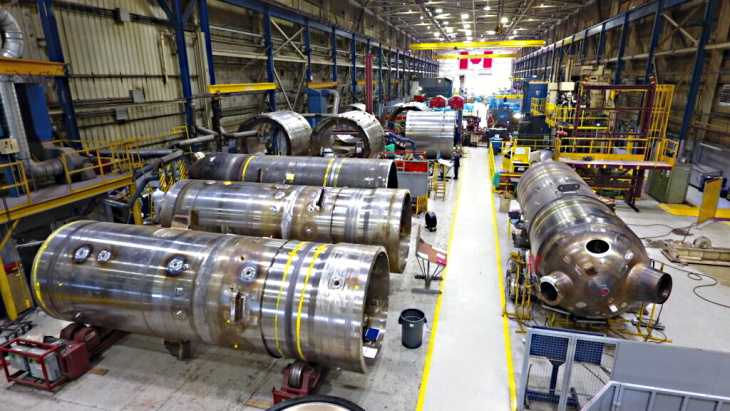SDUs are permanent disposal units to contain low-activity waste grout produced from solidification of decontaminated non-hazardous salt waste at the South Carolina site. The cylindrical concrete tanks are based on a design used commercially for the storage of water and other liquids. SDU 6, which was completed last year, is the site's first mega-volume SDU and is ten times larger than others there. The unit is 375 feet (114 metres) in diameter and 43 feet high. SRS will need a total of seven mega-volume SDUs to meet mission needs.
The unit was designed and built by SRS liquid waste contractor Savannah River Remediation (SRR) and will accommodate the large stream of DSS from the Salt Waste Processing Facility, which is being commissioned. Until the new facility comes online, SDU 6 will be filled with waste processed by the site's interim salt waste processing facility, the Actinide Removal Process/ Modular Caustic Side Solvent Extraction Unit. This unit removes highly radioactive isotopes, primarily caesium, from the tank waste, which are then vitrifed. The remaining waste stream - the DSS - is then transferred to the Saltstone Production Facility for stabilisation into a grout-like waste form. This is pumped into the SDU where it solidifies into non-hazardous saltstone.
SDU 6 will also receive DSS from the recently installed Tank Closure Caesium Removal demonstration project, which will remove caesium from high-level waste currently stored in H Tank Farm.
The Savannah River Site was constructed during the 1950s to produce the basic materials used in the fabrication of nuclear weapons, primarily tritium and plutonium-239. Five reactors were built on the site as well as support facilities including two chemical separations plants, a water extraction plant, a nuclear fuel and target fabrication facility and waste management facilities.
SRR manages SRS's liquid waste contract for the US Department of Energy.

.jpg)



_69614.jpg)

_15447.jpg)





